
Below are some red seaweeds I’ve been lucky enough to find and photograph on Oregon’s exposed rocky shores or washed up on the beaches. I’ve organized them loosely after Lamb and Hanby (2005) in the order they might be encountered from highest to lowest in the intertidal. The photos are from northern Oregon unless noted. If I use common names, they’re my choice. Experts cover the seaweeds shown below and many more in the books, field guides, and identification resources listed at the bottom of the page.
Let’s explore some reds!
Pyropia, nori
There are plenty of species. I haven’t had much luck sorting them out, so below I show examples from the mid and high intertidal. Pyropia leans toward iridescence, but its degree is variable. Kozloff says they appear oiled. You’ll see that in some of the images. It’s not uncommon to find fragments washed up on the beach.

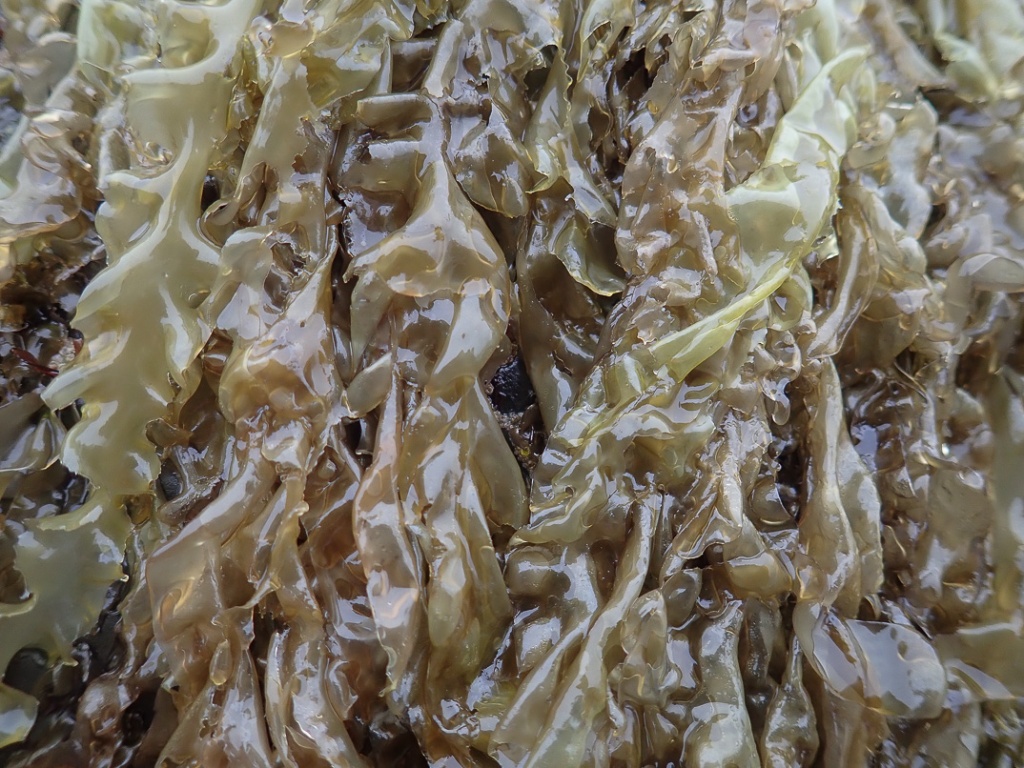


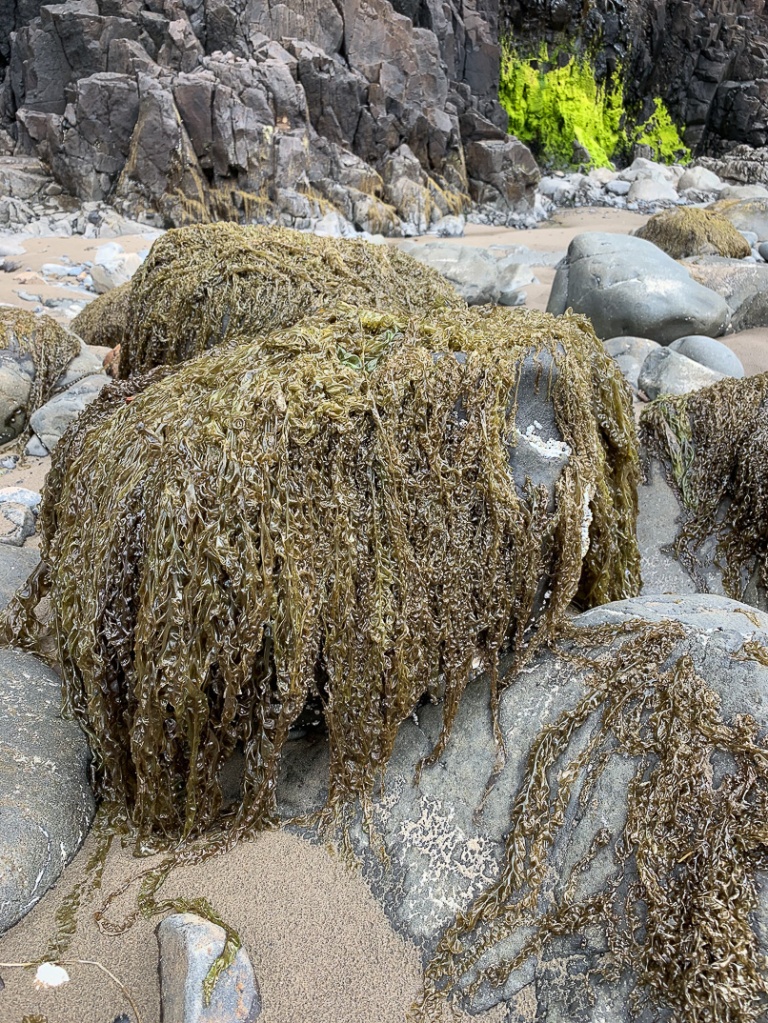





And here’s a long red blade to add to the mix. It could be Pyropia, Wildemaina, or another thin red blade. (I wish I knew—if you have an idea, give me a shout.) I’ve found it a bit lower than most of the Pyropia shown in this set, and the longest of the blades are a meter, maybe a little more in length.

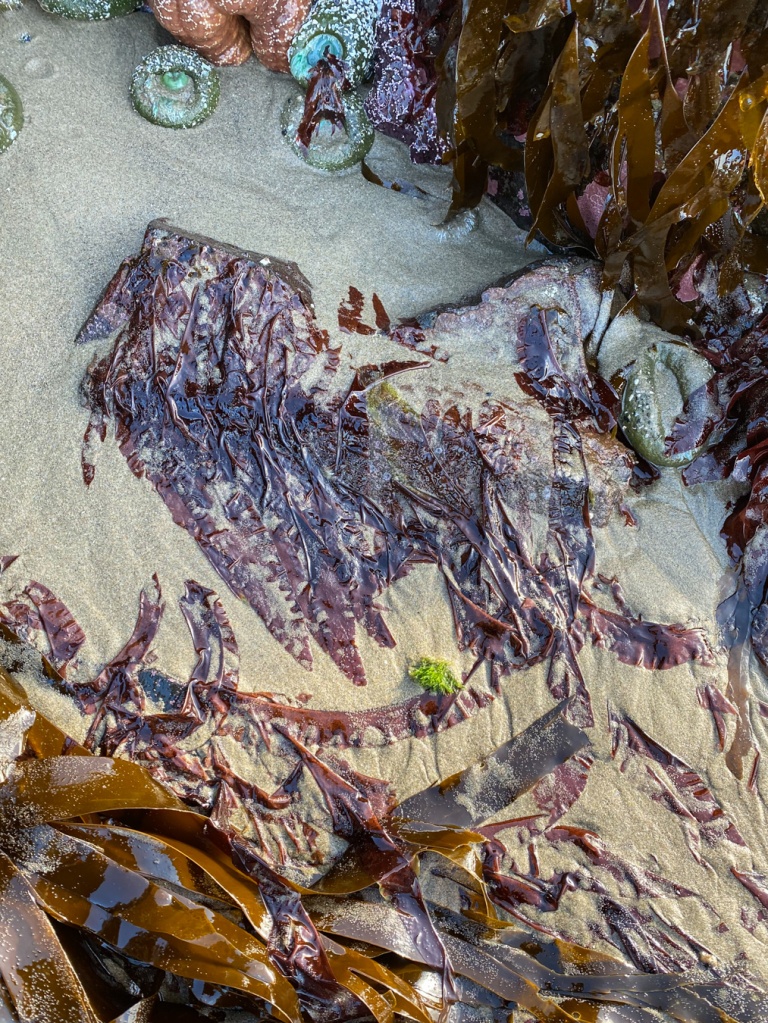

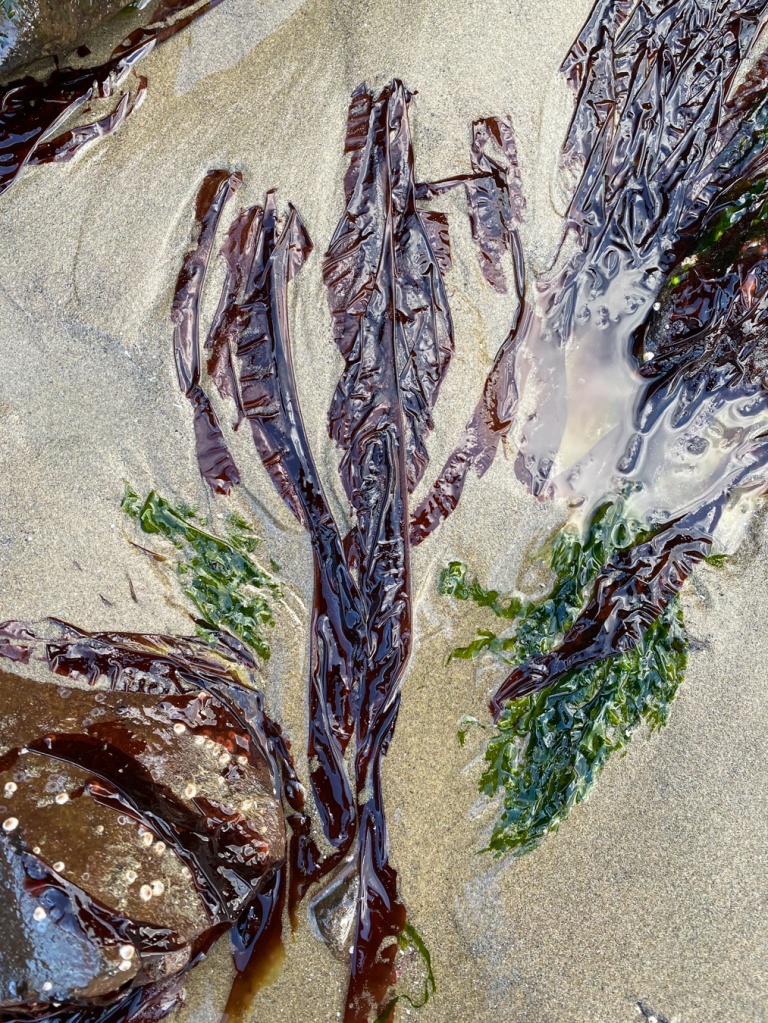
Bangia
You’ll find Bangia or Bangia-like filaments on rounded high intertidal rocks, where it looks and behaves like thinning human hair. To illustrate this, I featured Bangia in A Brief Account (with Video!) of the Bangia-Human Hair Resemblance. (Note: Druehl and Clarkston (2016) explain that Bangia is in a complex of filamentous reds.)


Endocladia muricata, nail brush
Endocladia is one of the high intertidal tufts.




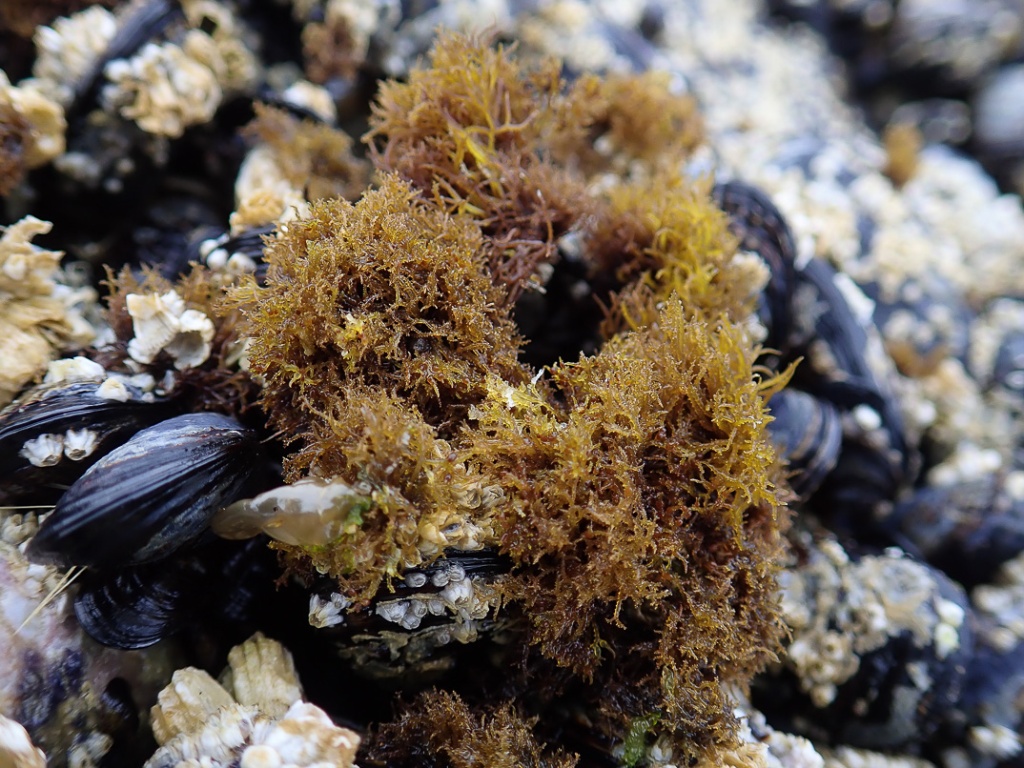
Gloiopeltis furcata
I didn’t notice this unassuming red ’til I took a closer look at the periwinkles that seemed to like it.

Cumagloia andersonii, hairy seaweed

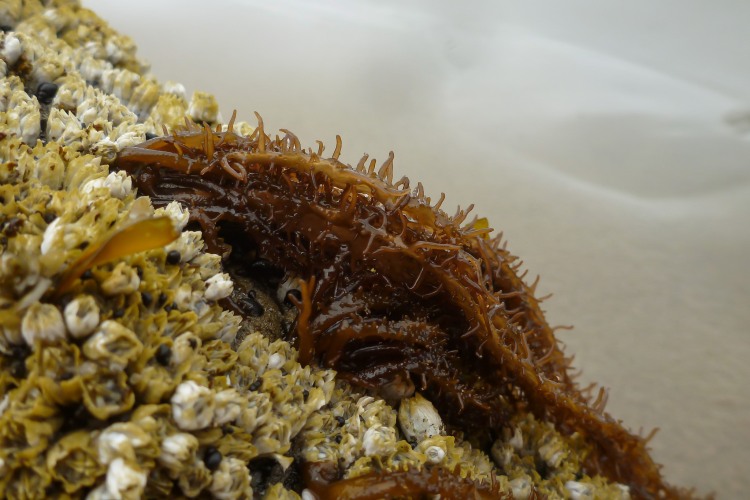
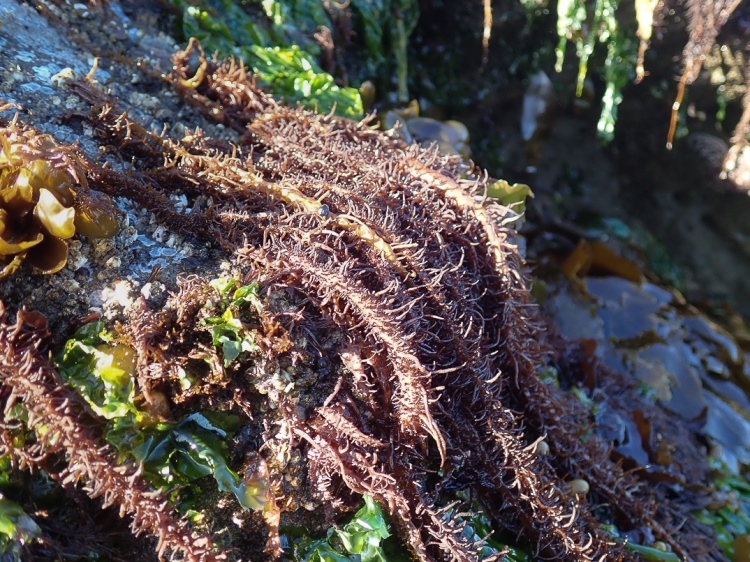

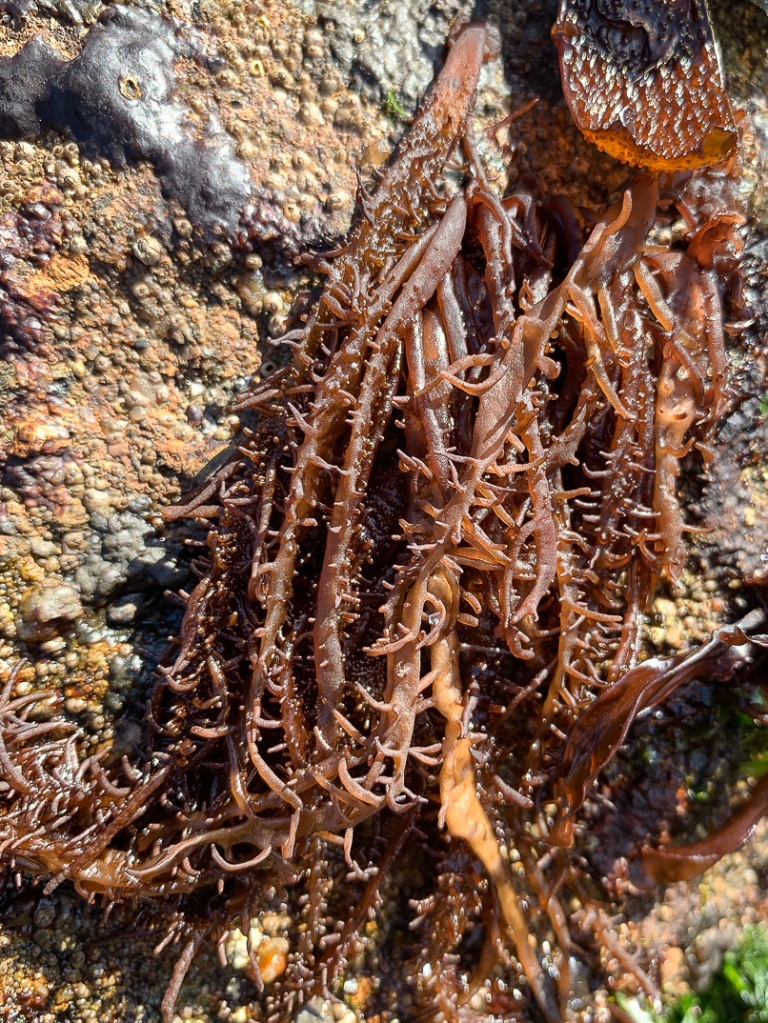

Red Crusts
When it comes to red crusts, the guides listed on this page suggest Hildenbrandia, the crust phase of Mastocarpus, and the basal crusts of a few other reds. That’s enough to make identifying them an enjoyable challenge. Here I feature two seemingly distinct forms: a thin red crust and a thicker darker one. Both are from the low intertidal.
The three images immediately below are from April 2018. The crust is thin and hard to the touch and seems to be associated with red blades.



The three images immediately below are from May 2021. The crust seems a thicker and darker than the crust shown above. The look here is more like dark caramel or dripped hard candy. Its surface is hard, and a common theme is the presence of branched corallines.



Mazzaella parksii, horn-of-plenty
A fun one to know; it’s another one of those reds that aren’t very red. Look for it on surf-exposed high intertidal rocks. On my home beaches, March through May is a good time to find nice-looking patches.




Mastocarpus, Turkish washcloth
One of the common bladed reds in the mid to upper intertidal. I used to confidently call the bladed form shown below Mastocarpus papillatus. But Druehl and Clarkston (2016) explain the genus is a complex of variable species. To make things more interesting, Mastocarpus also has a black crust life history phase.




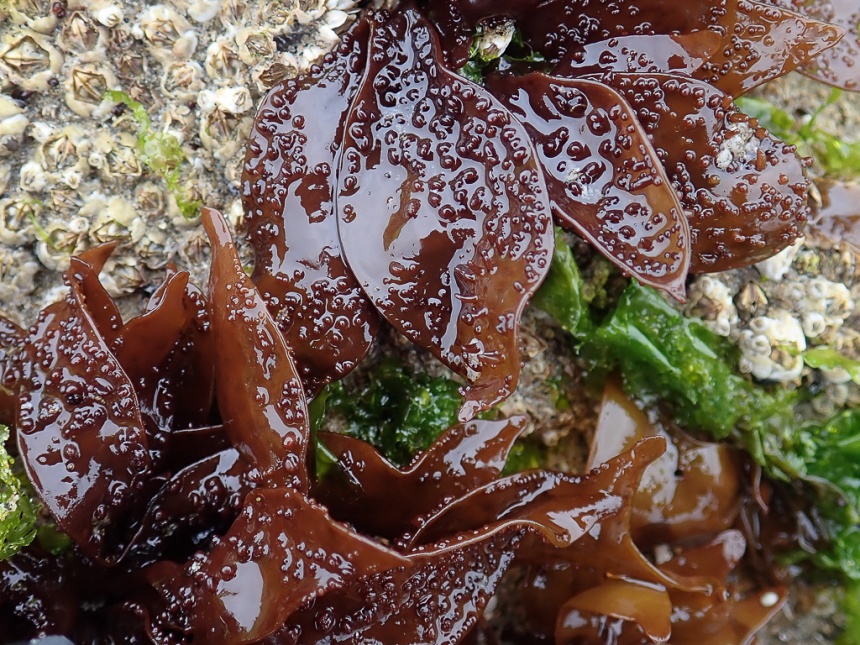
Neorhodomela
This is Neorhodomela larix, black pine



Cryptosiphonia woodii, bleached brunette
Cryptosiphonia woodii can be dense and turfy, can ring a tide pool, or show up as isolated tufts. It is limp when exposed and can become matted and appear dark, almost black. By July, in northern Oregon, you might see bleaching on the branch tips.
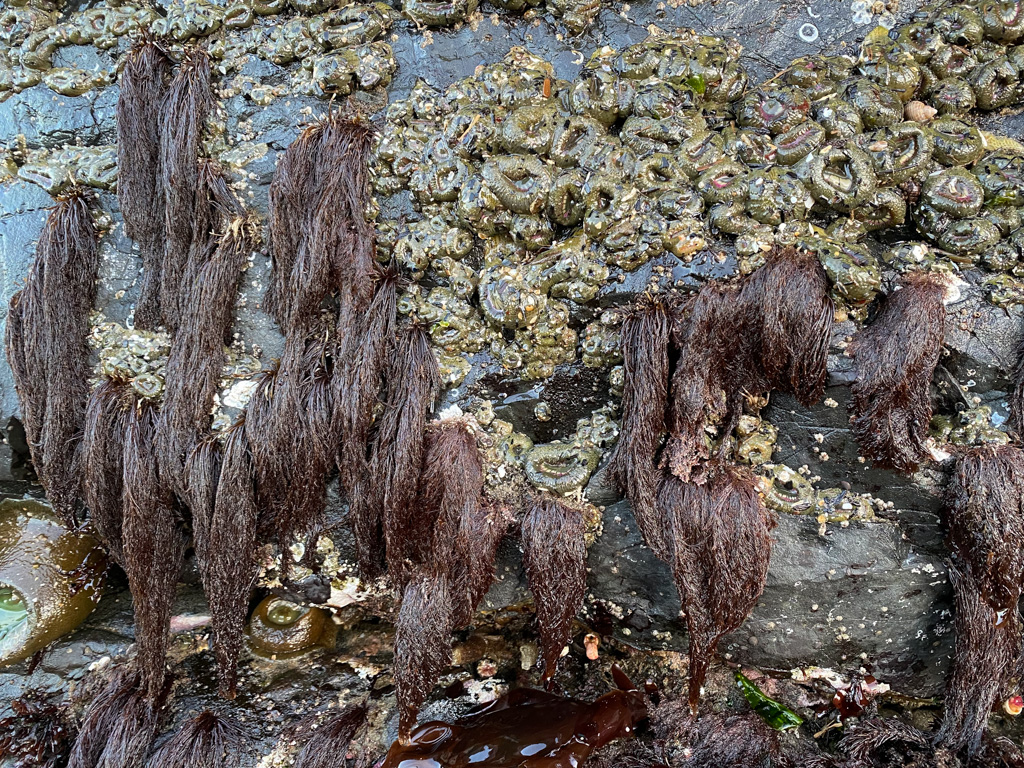


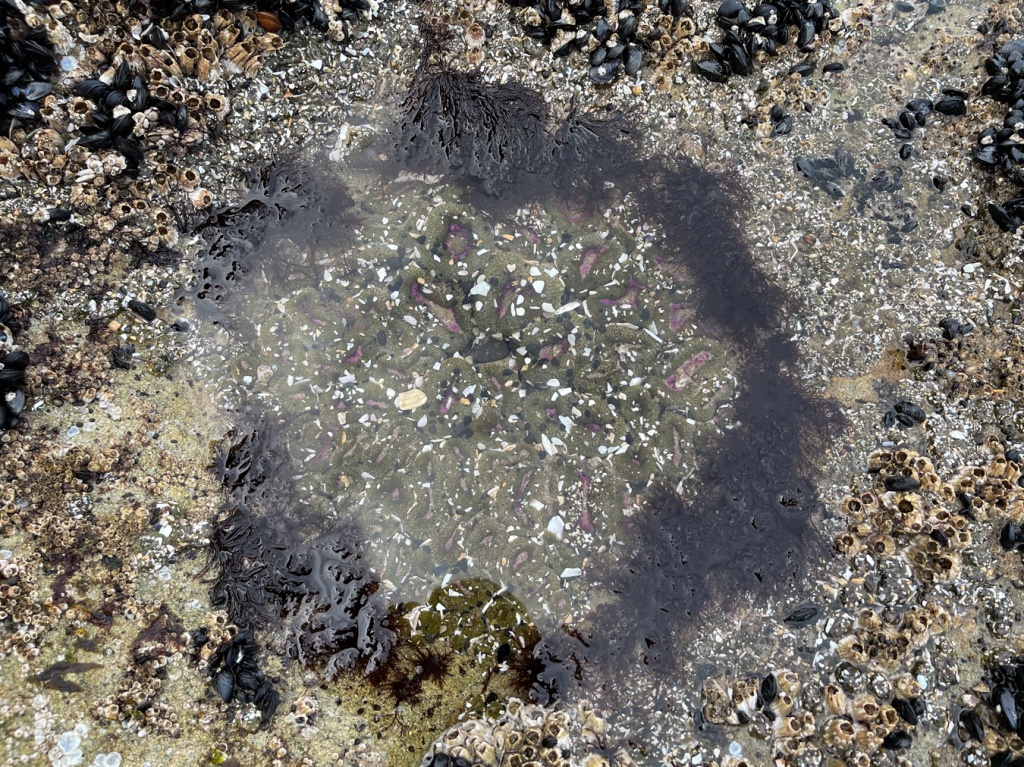
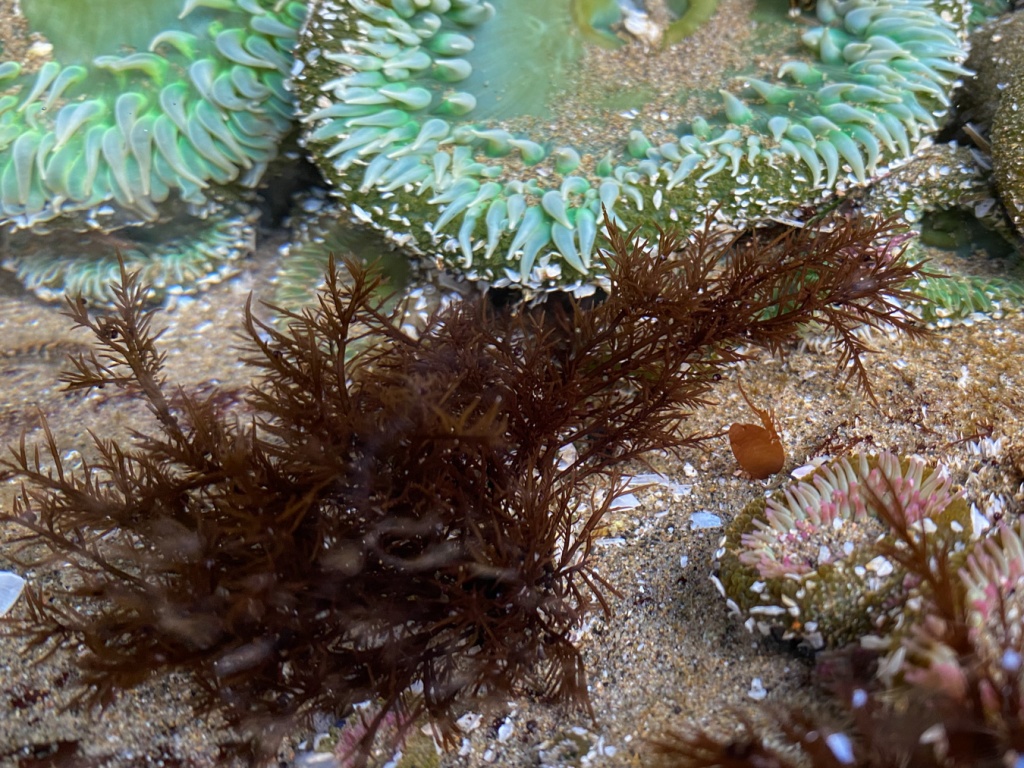
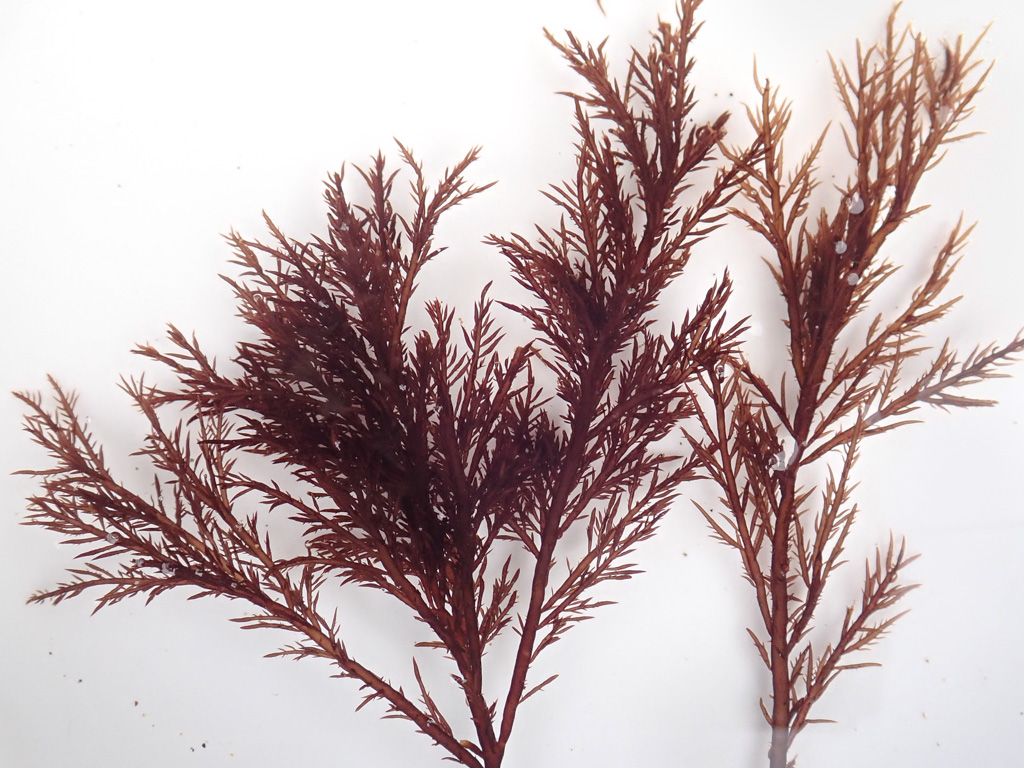
Microcladia borealis, sea lace



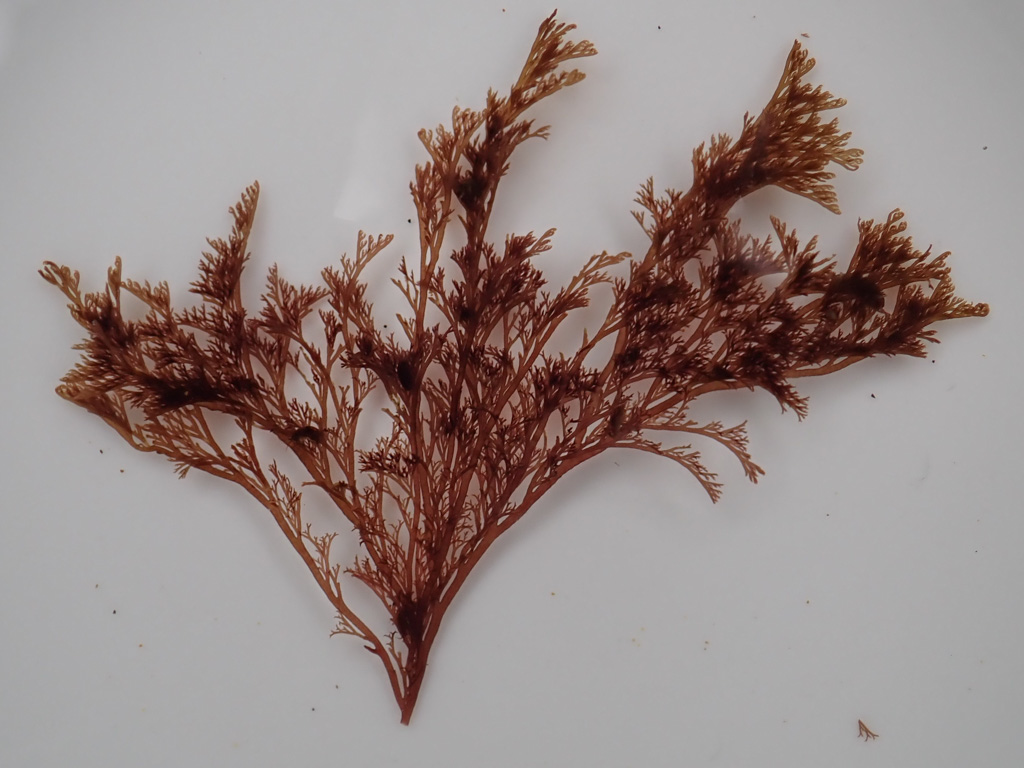
Halosaccion, sea sacs
The examples below are Halosaccion glandiforme.

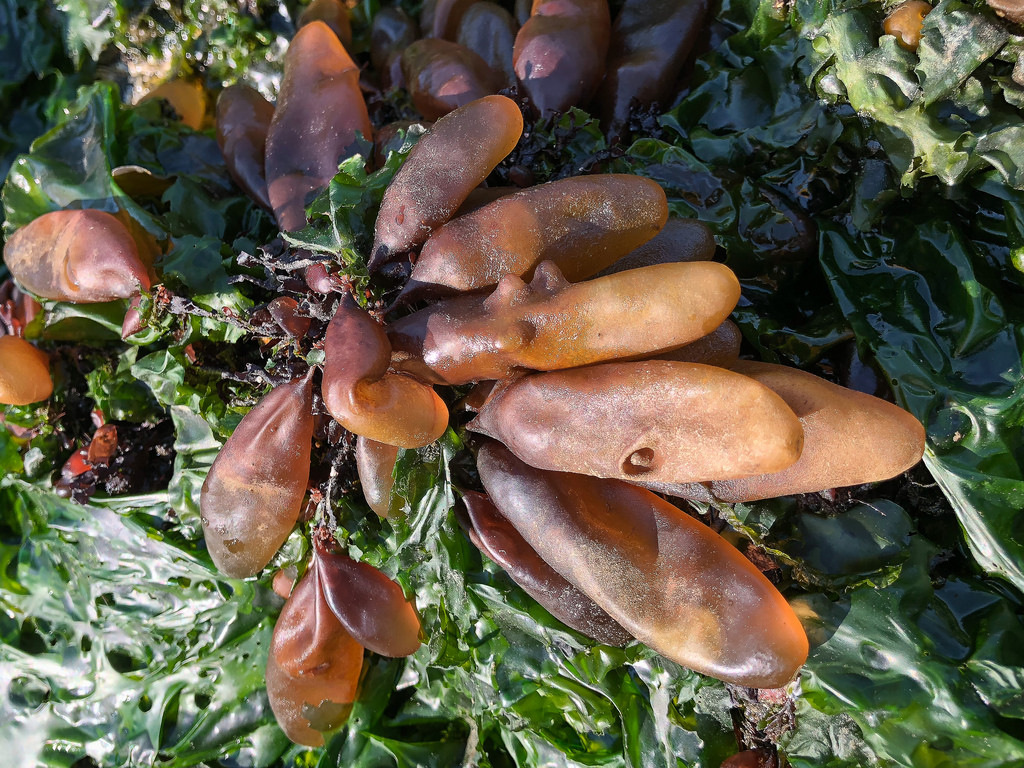




This dripping red carpet is a delicious mystery. Could it be Erythrotrichia? That’s just a guess.

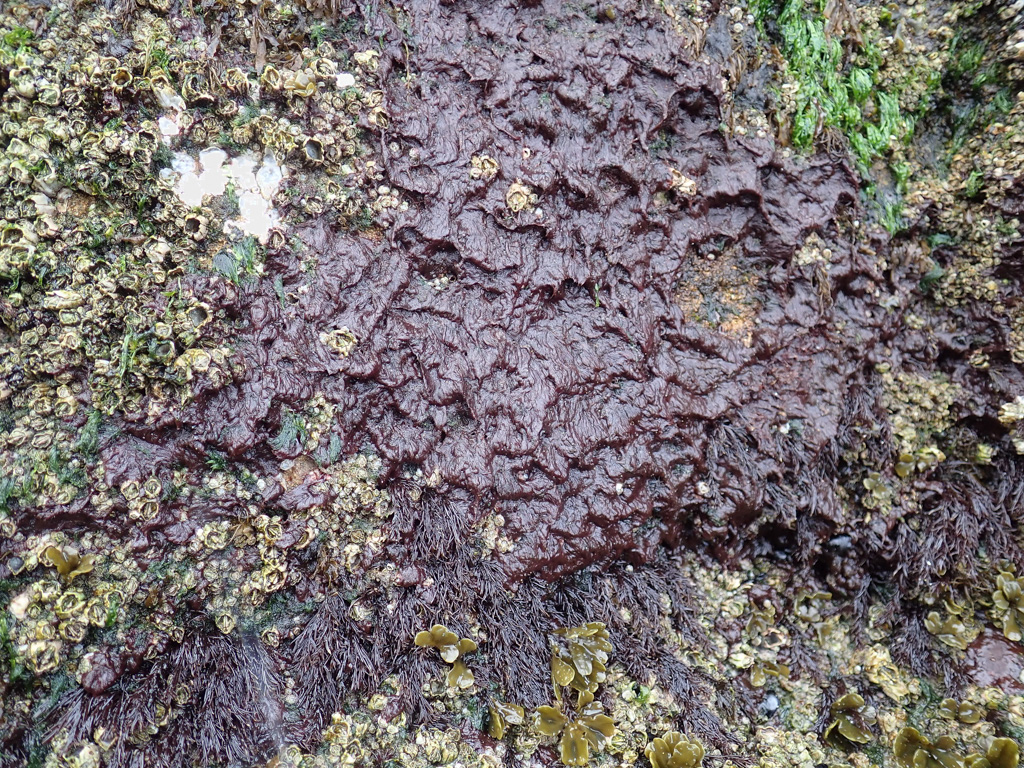

This is one of the filamentous reds, along with Polysiphonia below. You’ve probably seen this one as Pterosiphonia bipinnata, but things are ever-evolving so you might see it now as Savoiea robusta. In any case, its common name, black tassel, works pretty well. It can be found in more or less isolated tufts or cover quite a bit of space on mid-intertidal (and lower) vertical walls.




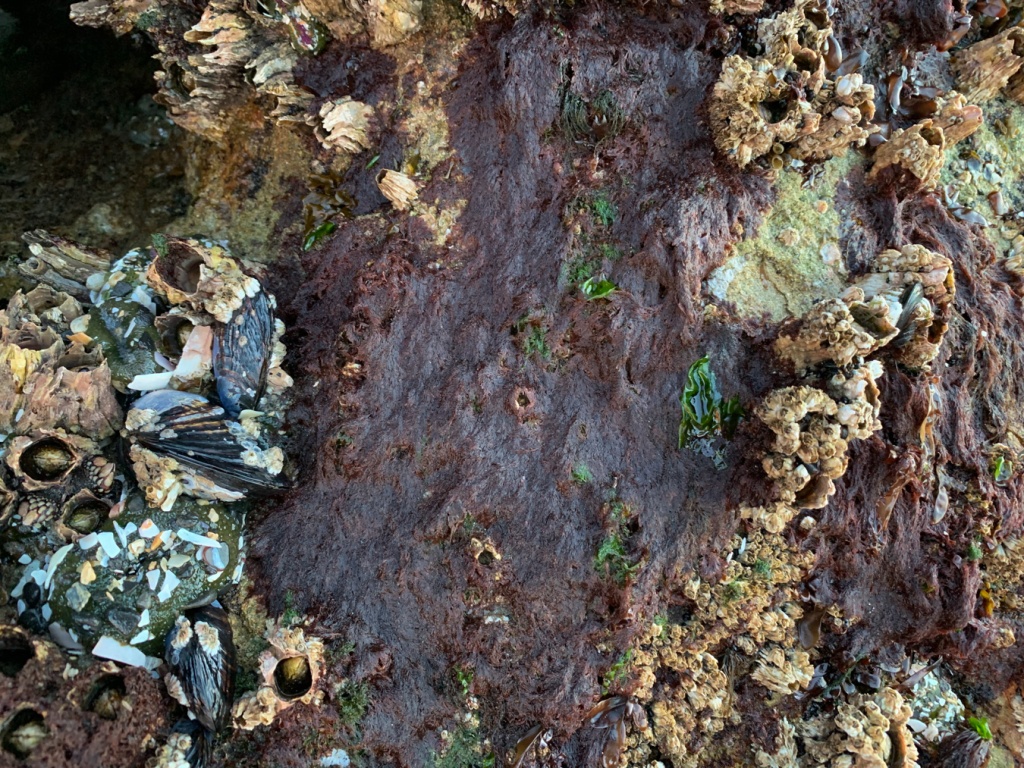
Good chance this filamentous tuft is Polysiphonia.


Callithamnion, beauty bush
The images below probably show Callithamnion pikeanum. Some references mention the branches are often covered with diatoms. I don’t know if the distinctive fuzzy look in the images below is due to a covering of diatoms or an inherent fuzziness.
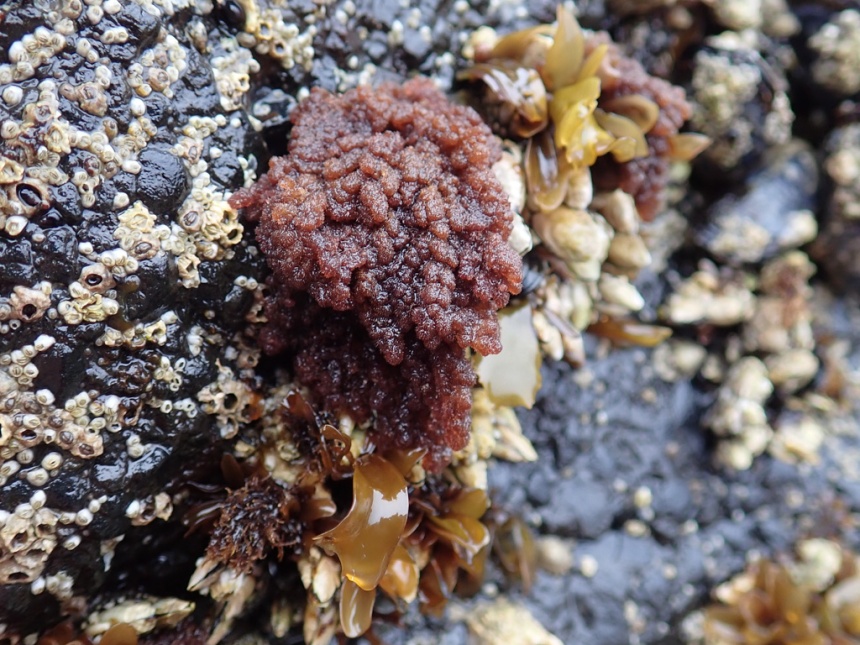


Prionitis
With several species of Prionitis in our area, I’m hesitant to make a specific identification call on this one. When conditions are right it can produce dense growth and a thick somewhat treacherous mat of blades at low tide.
***
Plocamium
On beaches I visit most, I come across two forms of Plocamium. I’m pretty sure the examples immediately below are P. violaceum. It’s quite common.





The other Plocamium I sometimes encounter, and it brings me a smile whenever I do, is P. pacificum.

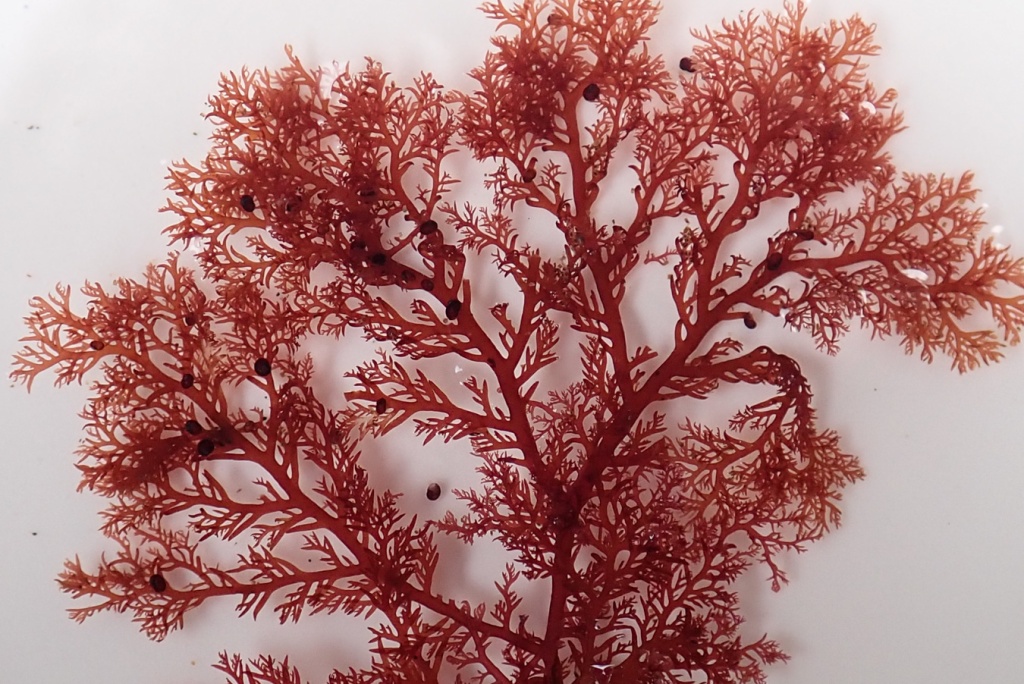
Melobesia, seagrass crust
Easy to find whenever the tide is low enough to expose surfgrass beds. Melobesia can also be found in drifted surfgrass among sea wrack.
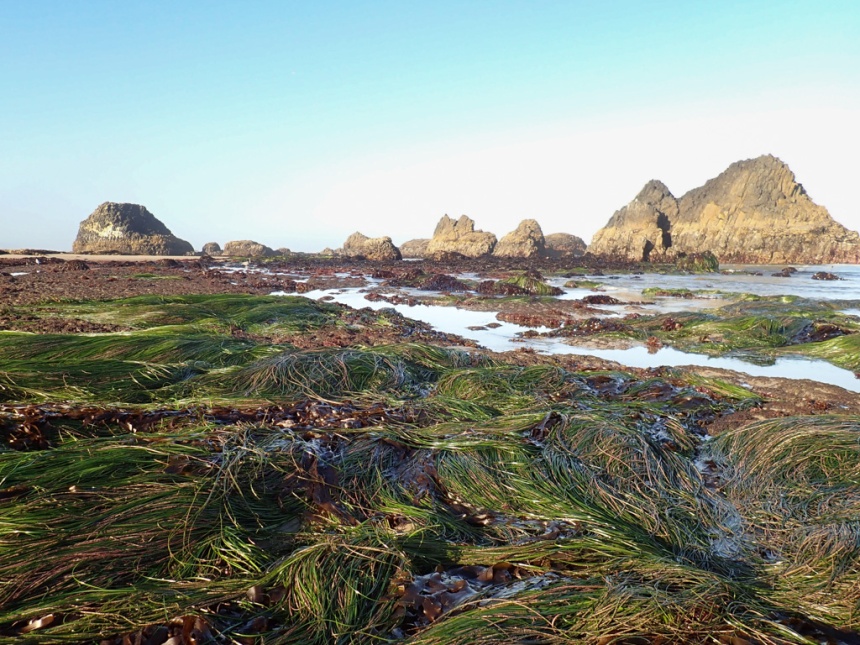


Corallina
Corallina officinalis var. chilensis is at home in and around tide pools.

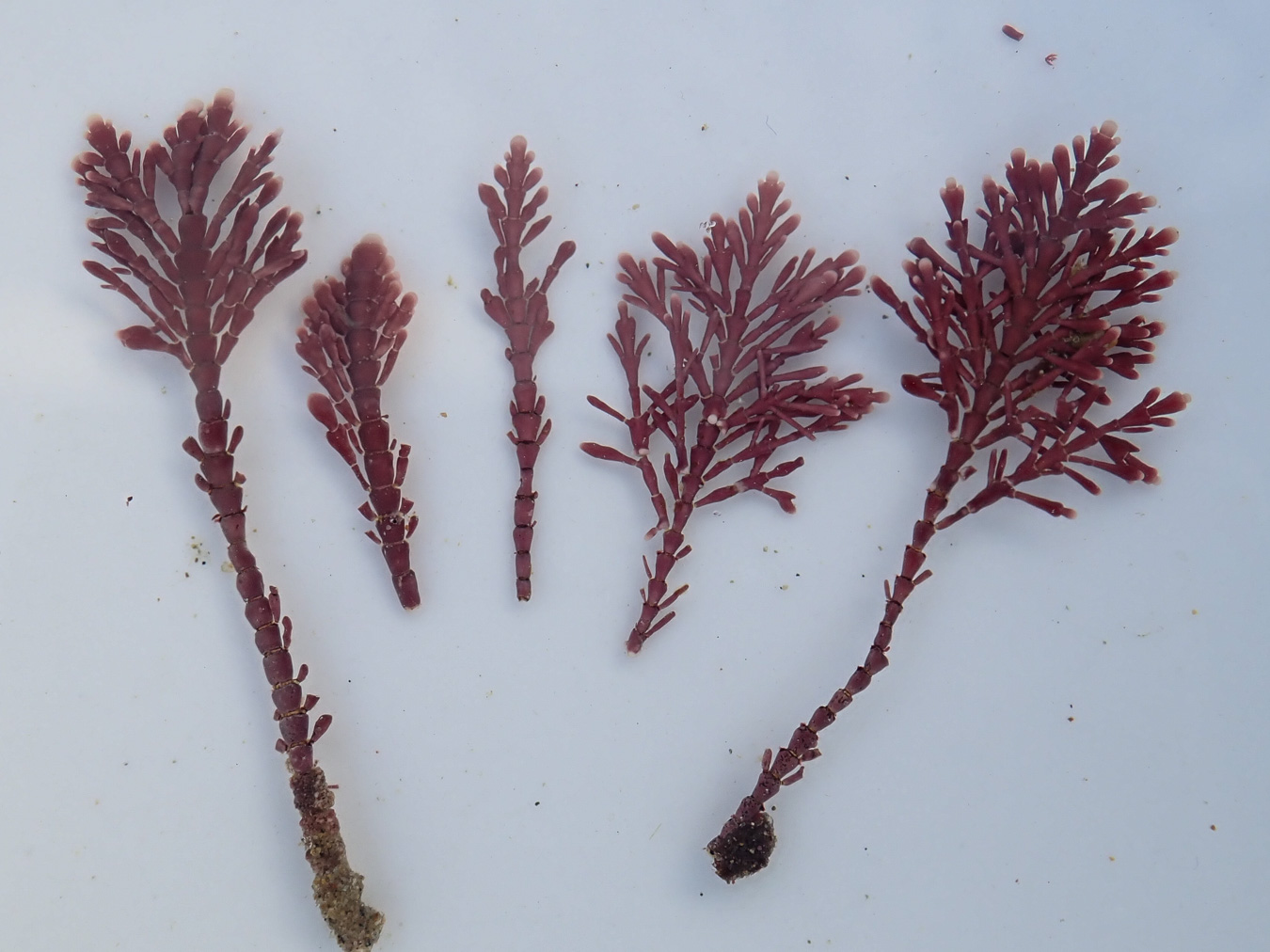

The images below show Corallina vancouveriensis. It is prominent on low intertidal rocks and has a grayish or purplish cast compared to C. officianalis.



I’m pretty sure the images below show Calliarthron, and if they do, it’s probably C. tuberculosum.


Dilsea californica




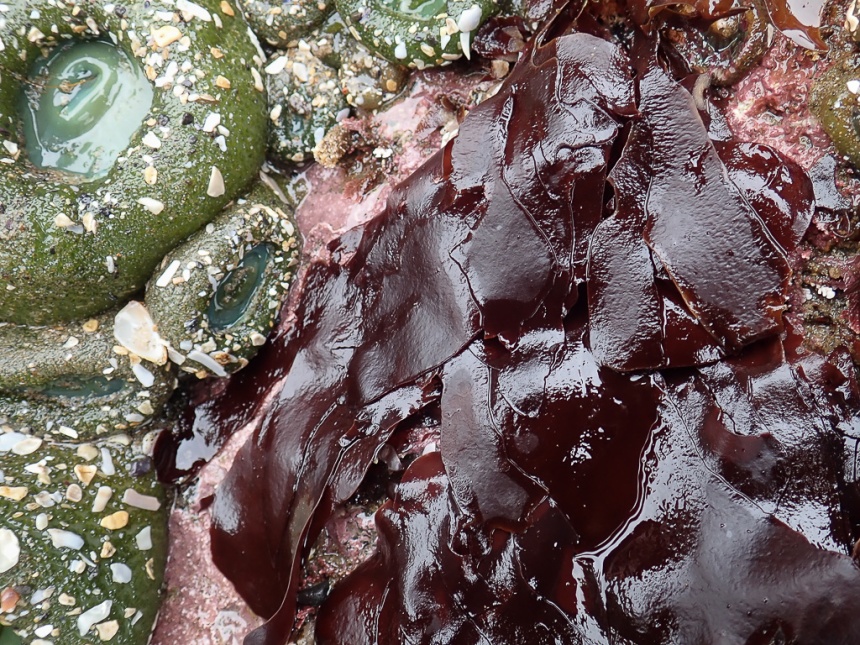
Farlowia mollis
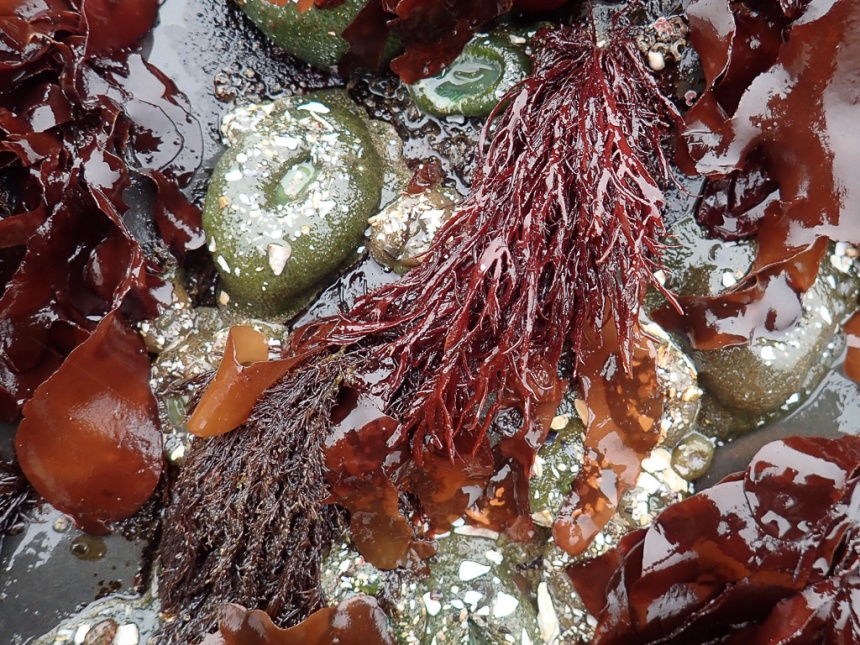



Flat-tipped forked seaweed, Ahnfeltiopsis linearis
I’m pretty sure about the ID here, but like all of these reds, my IDs are open to interpretation. Attractive and photogenic, A. linearis is at home with periodic sand burial. Ahnfeltiopsis was featured in Seaweeds in the Sand.
***
Gloiosiphonia
I think this one is G. verticillaris.
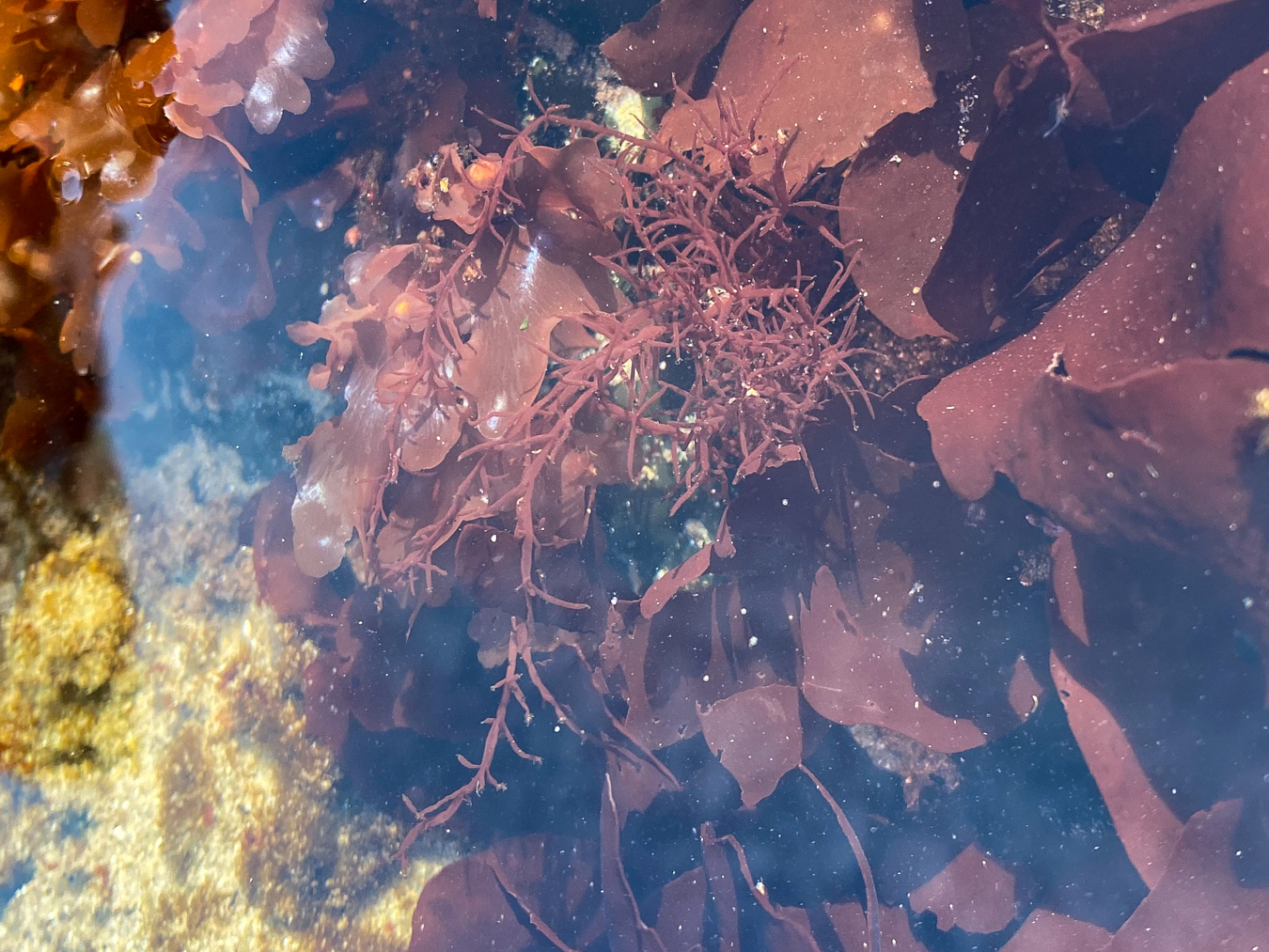


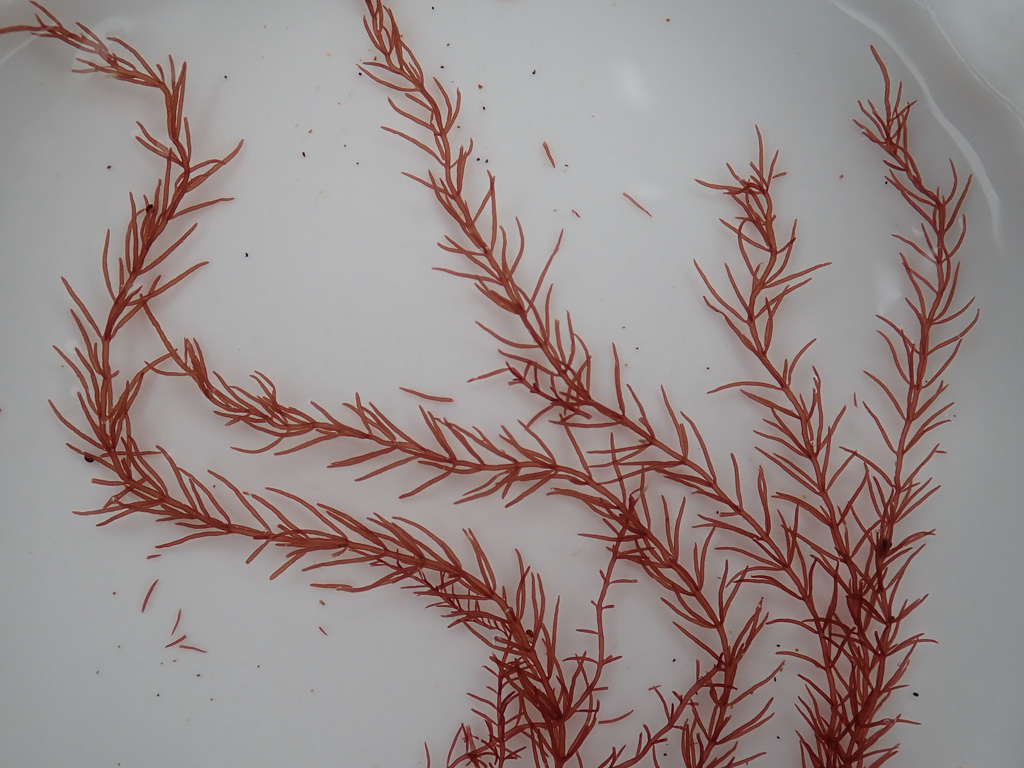
Callophyllis?
A beautiful puzzler, small and erect. Drifted in on the tide

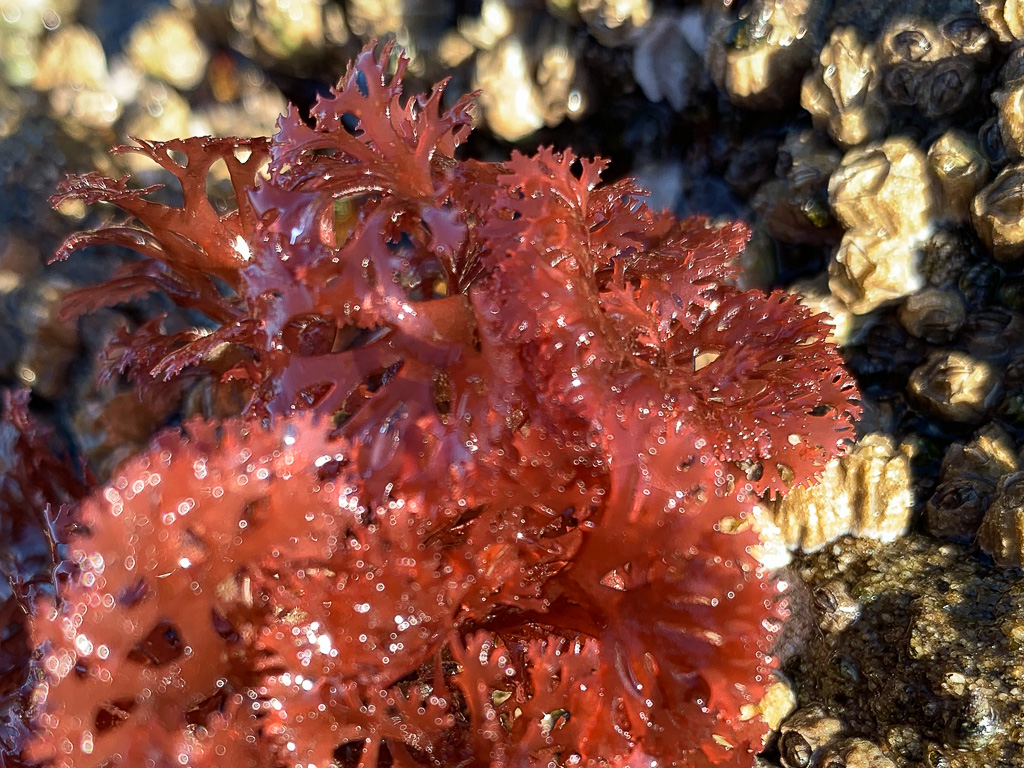
Turkish towel, Chondracanthus exasperatus
When I see Chondracanthus, it’s usually as drift on the sandy beaches. Chondracanthus was featured in a brief older post, Turkish Towel.

***
Mazzaella splendens, rainbow leaf
With its splendid scientific name, common names don’t seem particularly warranted, but besides rainbow leaf, you’ll see splendid iridescent seaweed and iridescent seaweed. Its big blades will give you a lot of looks. Here are a few. Note: M. splendens is variable enough that I’m not going to claim I’m certain these are all M. splendens, but I think they are.
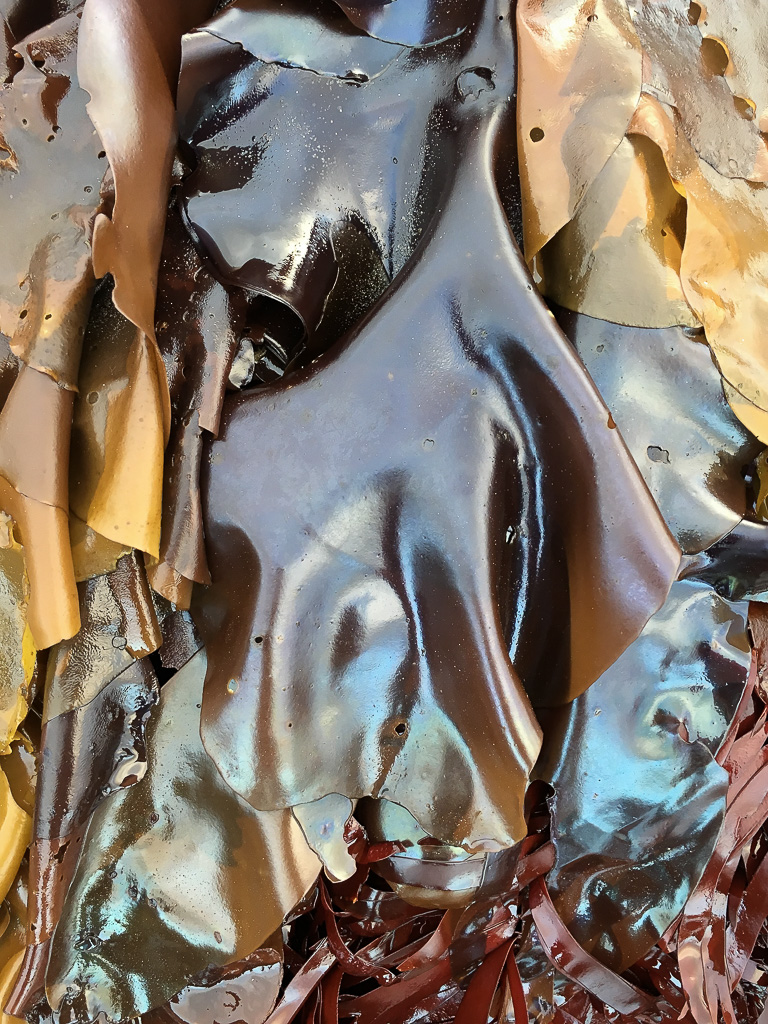



Cryptopleura or Hymenena
Or maybe both! These reds washed ashore in a diverse mass of drift macroalgae. The irridescence stands out pleasingly in the drift line. My identification is tentative and general; please drop me a line if you have identification ideas.
***
Erythrophyllum
When morning sunlight brightens its midribs, Erythrophyllum is a beauty. Unfortunately for me, it’s an all too uncommon treat along the intertidal shores I frequent, where even a drifted blade is notable. When I have found Erythrophyllum, its habitat, on the sides of surge channels and other rough low places, means intimate photographs are hard to come by. I think the examples shown below are E. delesserioides
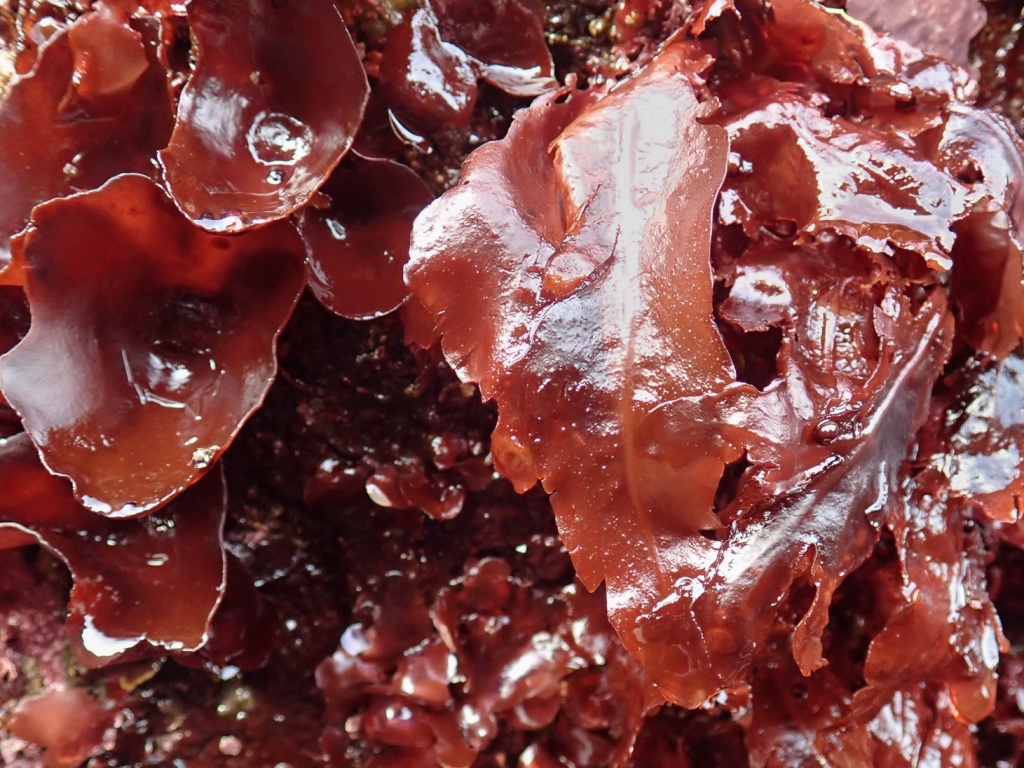


The examples below are in that Gracilaria/Gracilariopsis crowd. Seems like sand is always present or very nearby.

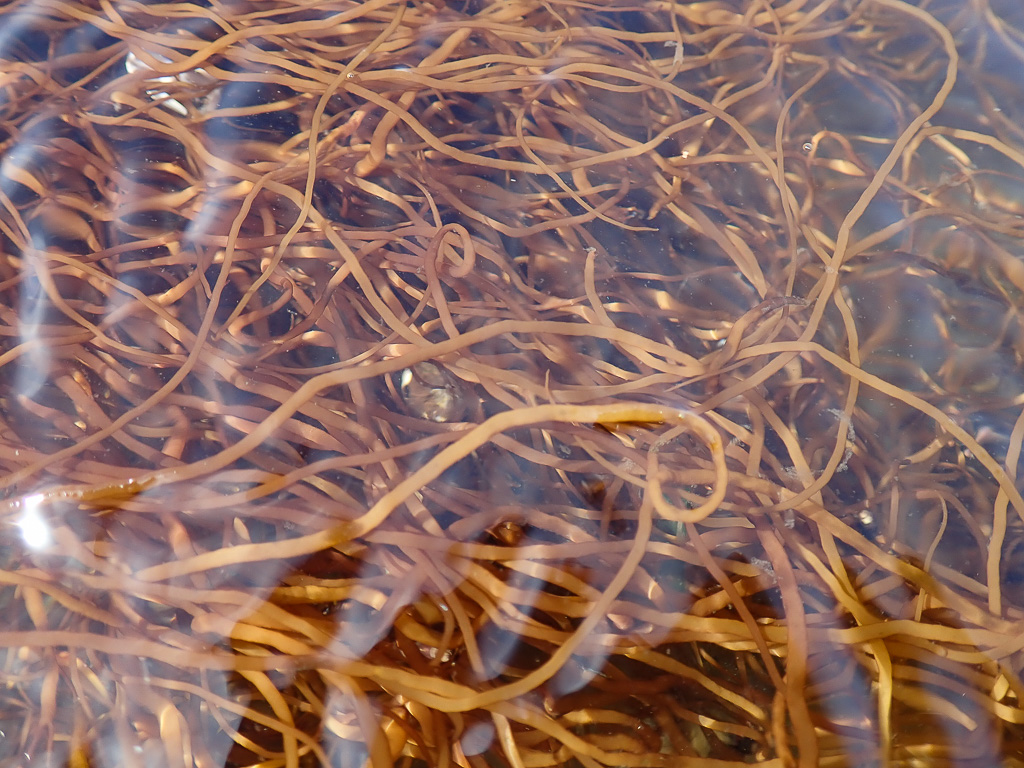


Odonthalia floccosa

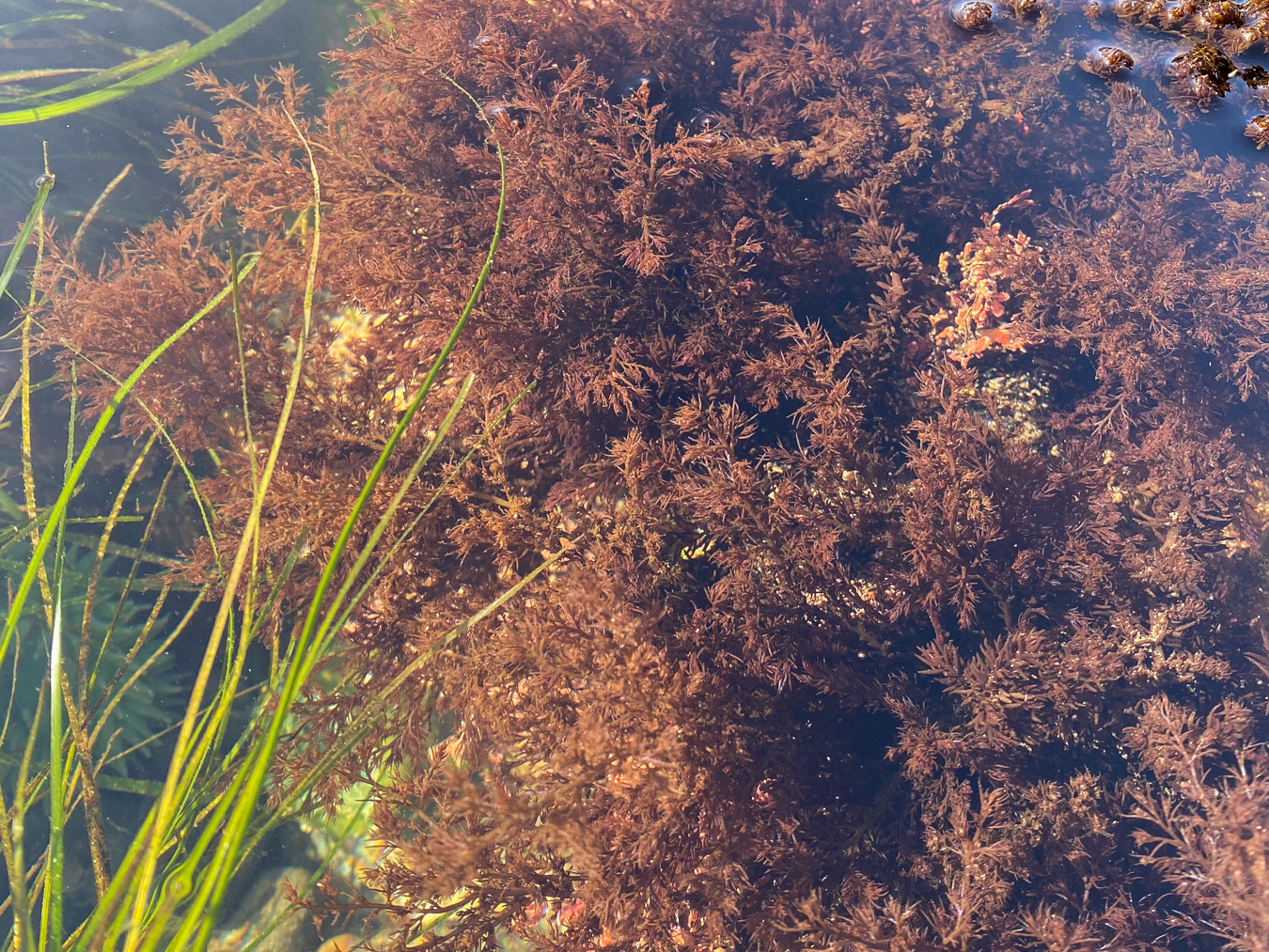

Odonthalia floccosa f. comosa
Not super common on my home beaches, this shaggy red sure is a beauty.



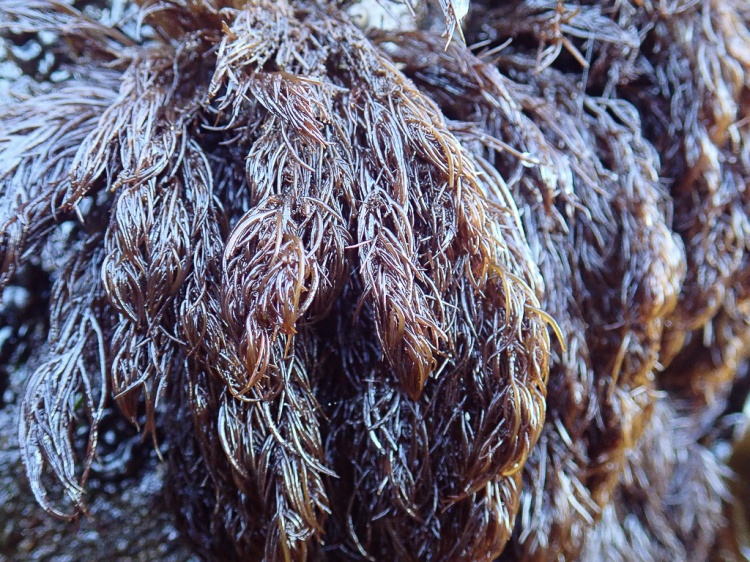
There are a few delicate fern-like Neoptilota and Ptilota on our low shores. The examples below are among them.
The three images in this set look a lot like Ptilota filicina, common in the low intertidal.
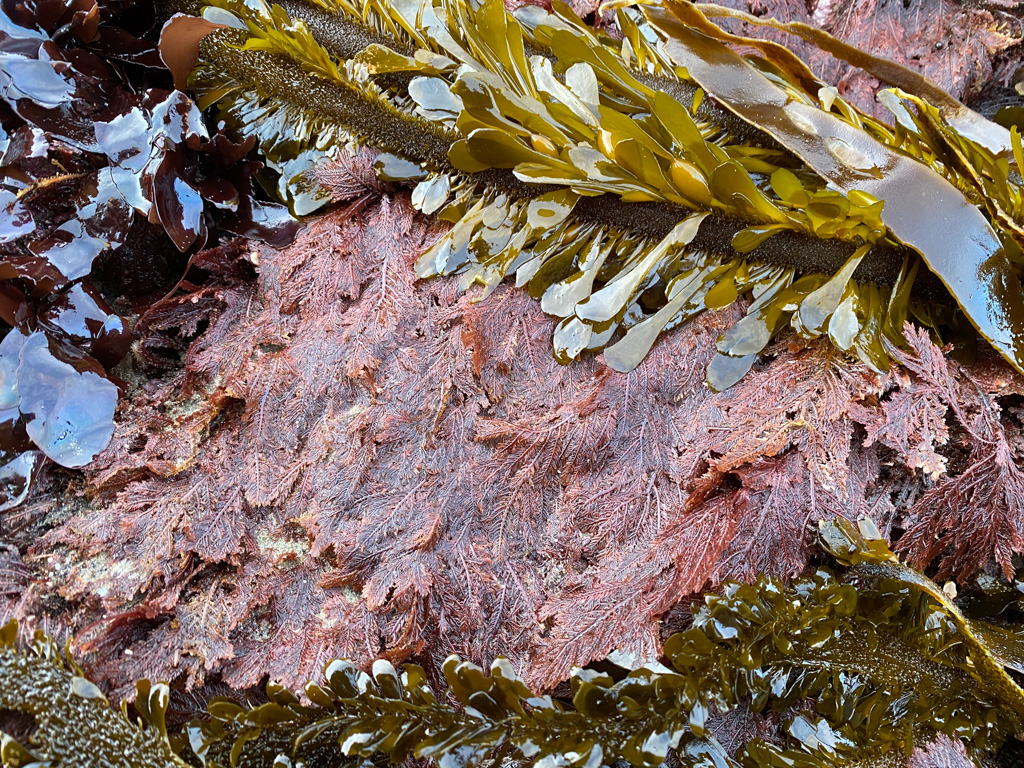


Also in the Neoptilota and Ptilota collection, here’s something a little different. The three images in the set below are of the same drifted mass. There’s a decent superficial resemblance to Ptilota hypnoides, but things are ever so much more complicated than that.


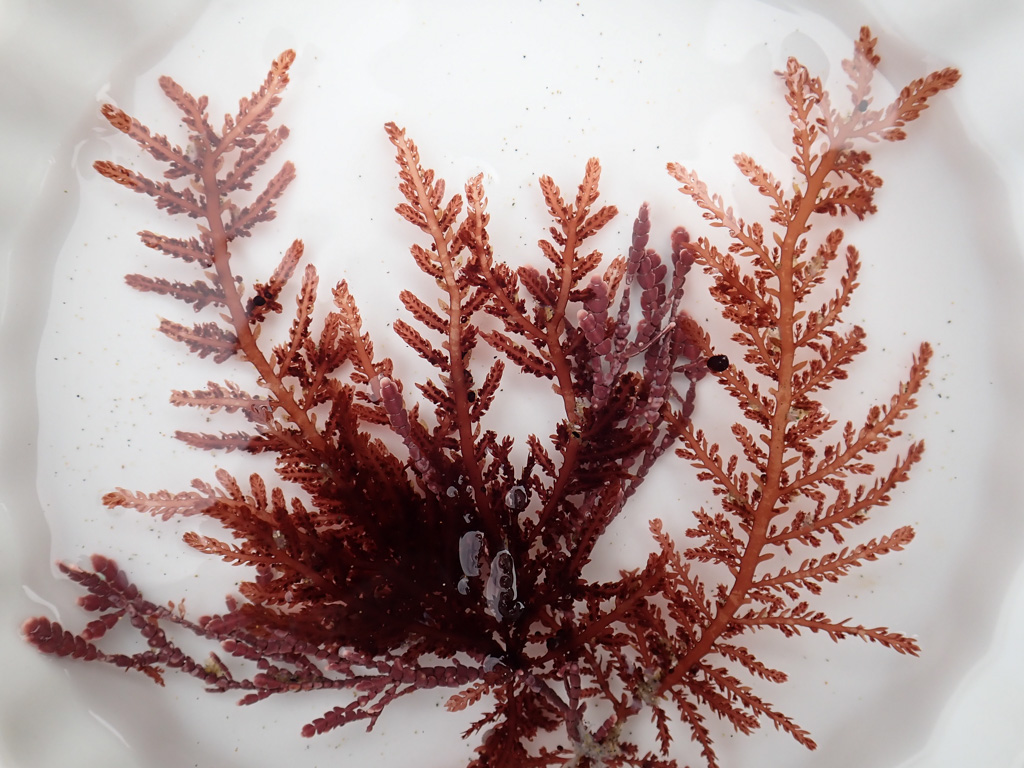
Neogastroclonium subarticulatum, sea belly


Osmundea spectabilis


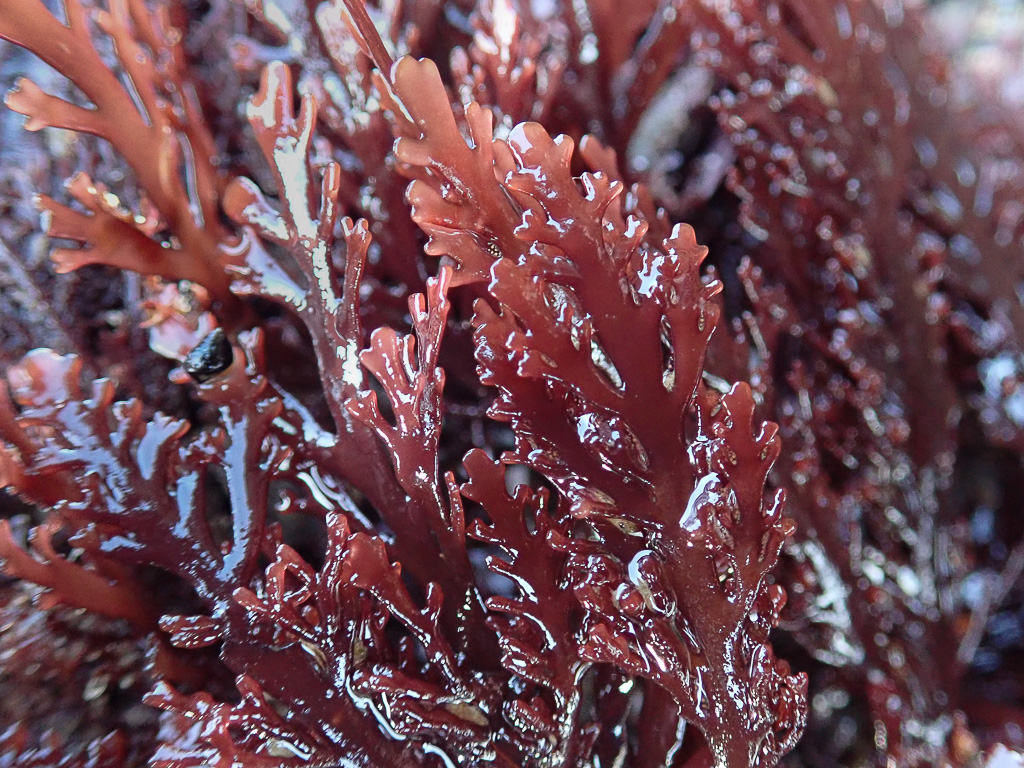


Sarcodiotheca gaudichaudii, succulent seaweed
I’ve seen S. gaudichaudii only at low tide on Salish Sea shores
***
Smithora naiadum, red fringe
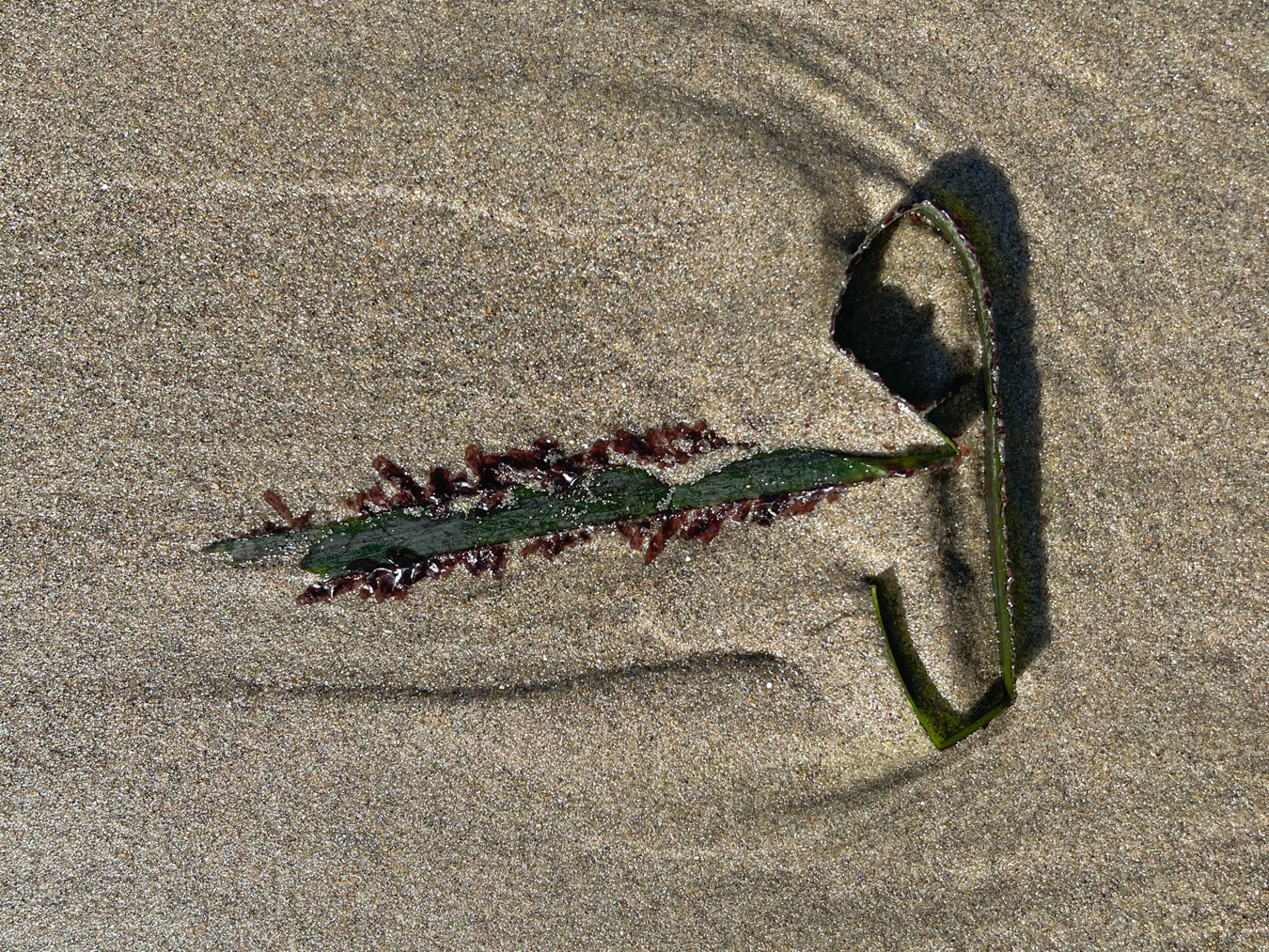

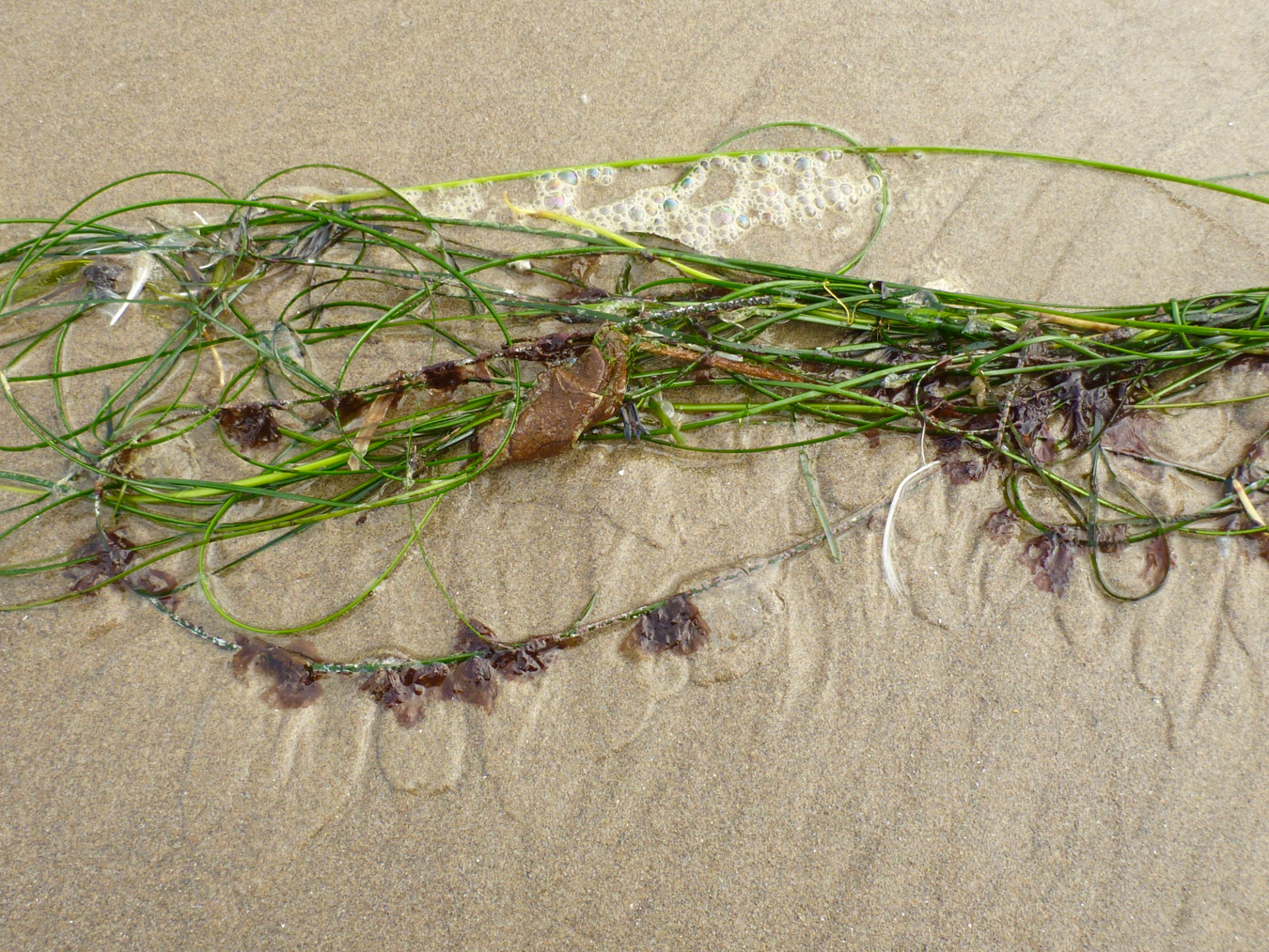
Polyneura latissima
Simplicity is rare among the reds, but we’ll take it where we can get it. Any Polyneura encountered on Pacific northwest shores is P. latissima.
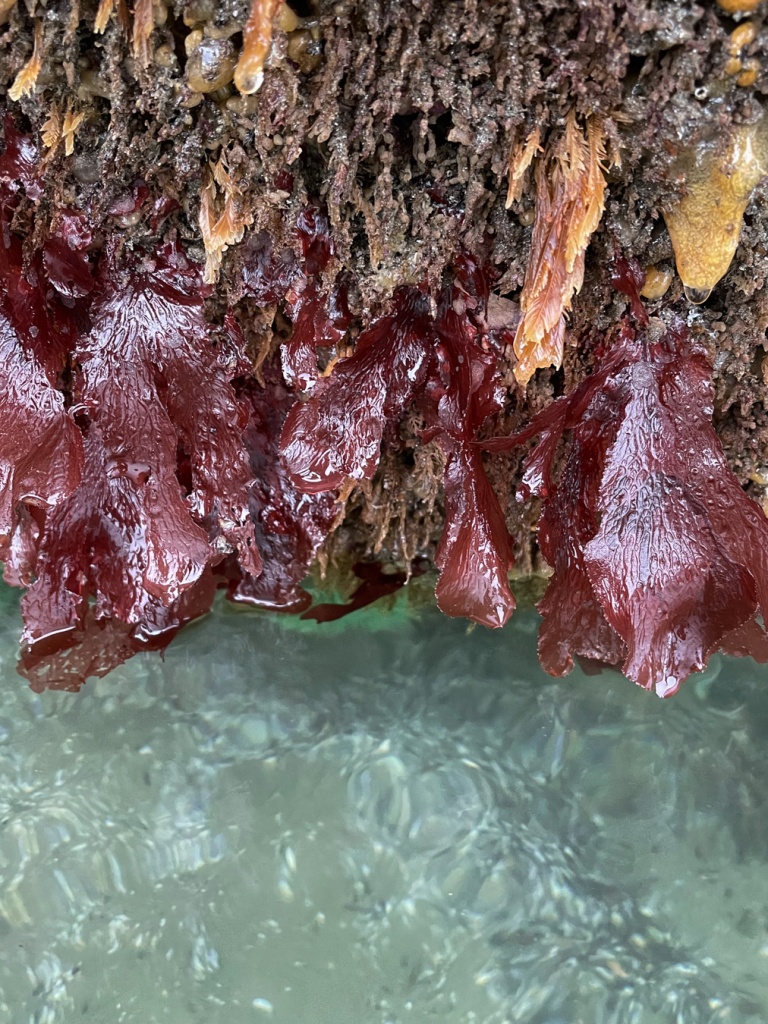

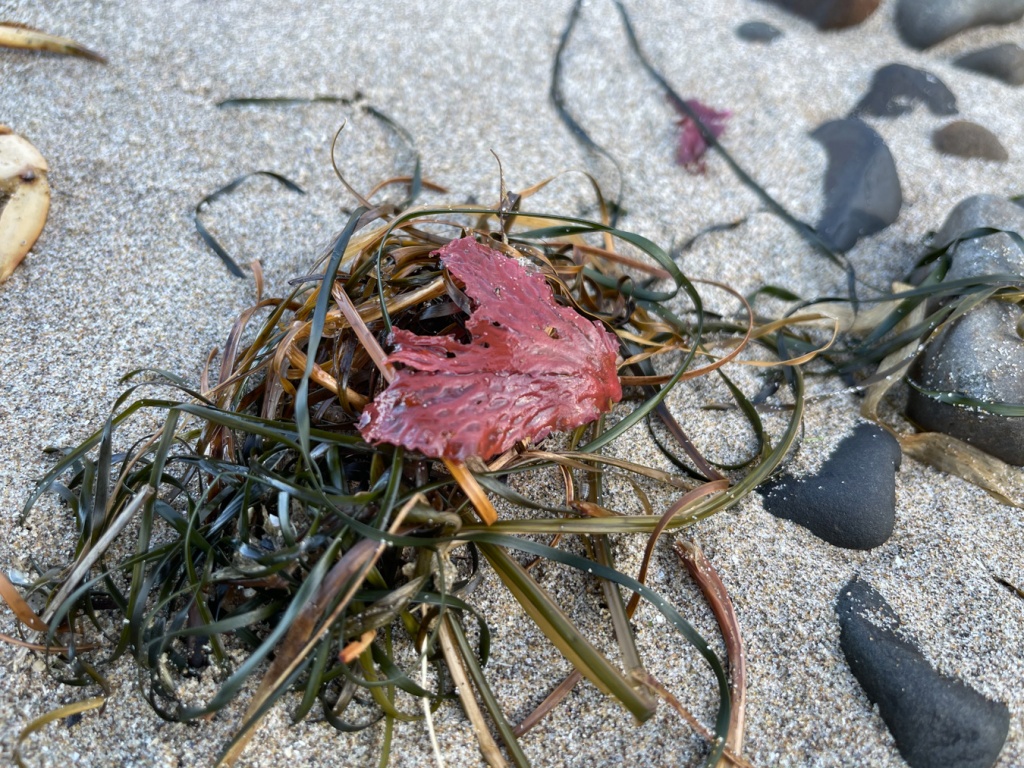
Constantinea simplex, cup and saucer
Always a low intertidal treat.




Pyropia nereocystis, bull kelp nori
These thin red blades are fairly common in fall and winter, when drift bull kelp appears on the beaches.

Something approximating Antithamnionella, red sea skein
If indeed it is Antithamnionella, you’ll see it as Irtugovia in some of the guides. It also goes by hooked or red skein. There are several filamentous reds which are hard to tell apart from photos alone. Antithamnionella a common epiphyte on bull kelp stipes, so I’m trusting that’s what at least two of these images show. They all seem to have the same look so I’ve lumped in the reds on the drifted timber too.



Pterochondria woodii
I’m pretty sure this lacy epiphyte is P. woodii.
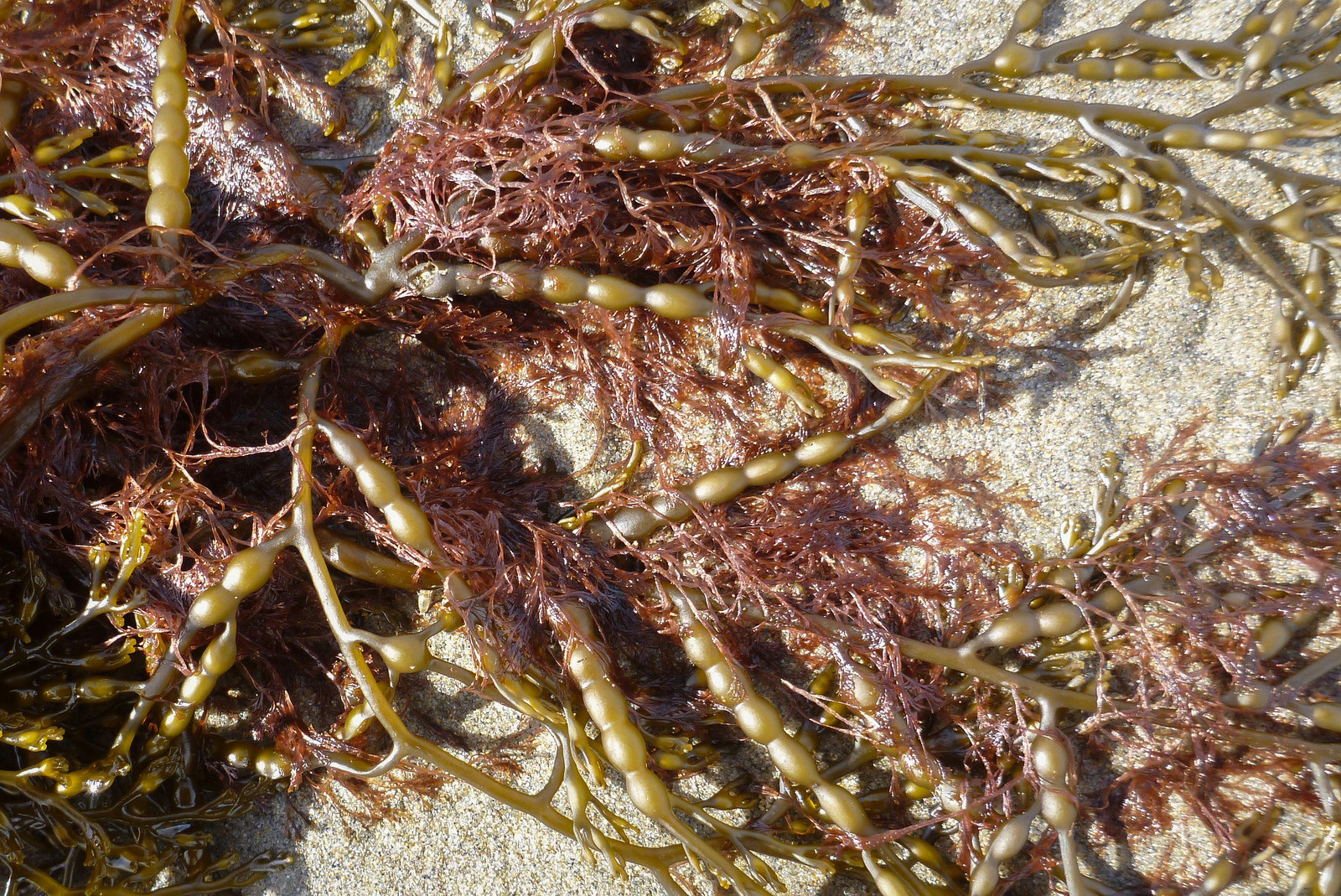
***
A rose red mystery

Rose-purple frills on a deep purple blade

References
Abbott, I. A. and G. J. Hollenberg. 1976. Marine Algae of California. Stanford University Press.
Druehl, L. D. and B. E. Clarkston. 2016. Pacific Seaweeds: A Guide To Common Seaweeds of the Pacific Coast. 2nd ed. Harbour Publishing Co.
Harbo, R. M. 2011. Whelks to Whales: Coastal Marine Life of the Pacific Northwest. 2nd ed. Harbour Publishing Co.
Kozloff, E. N. 1993. Seashore Life of the Northern Pacific Coast. 3rd ed. University of Washington Press.
Lamb, A. and B. P. Hanby. 2005. Marine Life of the Pacific Northwest. Harbour Publishing.
Mondragon, J., and J. Mondragon. 2010. Seaweeds of the Pacific Coast. Shoreline Press.
Sept. J. D. 2019. The New Beachcomber’s Guide to the Pacific Northwest. Harbour Publishing.
Online Resources for Reds
Netarts Bay Today – Red Seaweeds. Accessed 01/27/2023.
Biodiversity of the Central Coast – Red Algae (Rhodophyta). Accessed 01/27/2023.
Seaweeds of Alaska – Seaweed: Rhodophyta. Accessed 01/27/2023.
Give the Seaweed Sorter App a try!
I updated this page on March 13, 2023.











